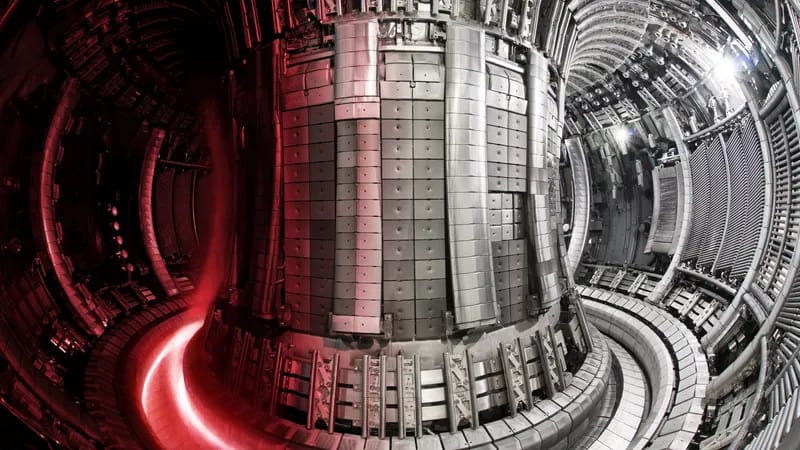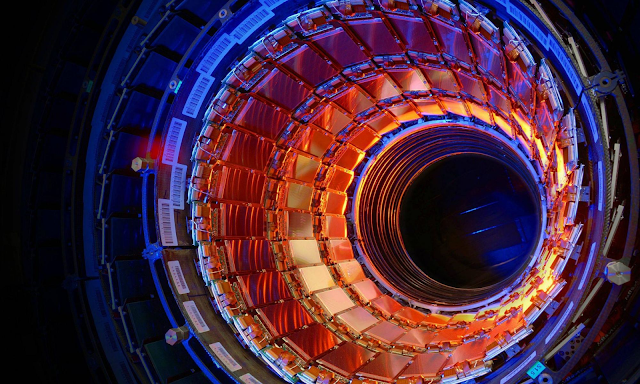Merely 0.2 milligrammes of fuel were required to generate sufficient energy to run 12,000 households.
This week has seen some noteworthy nuclear fusion announcements and advancements. The greatest energy production ever achieved with nuclear fusion has been announced by scientists in the United Kingdom, after the thrilling updates from the American Inertial Fusion project.
In a test conducted in Joint European Torus (JET), 69.26 megajoules of energy were released from just 0.21 milligrammes of fuel in five seconds of high fusion power. This is the same amount of energy as two kilogrammes (4.4 pounds) of coal. The fuel in question is a combination of deuterium and tritium, two forms of heavy hydrogen that will be used in future nuclear fusion power plants.
JET is not intended to reach the energy projected for those stations, notwithstanding the record. It serves as a guide for large-scale prototypes such as DEMO and ITER. When ITER starts up the following year, it should produce ten times as much energy as is used. DEMO, its replacement, will produce power using 25 times as much energy. Nevertheless, the JET results demonstrate this technology’s promise.
“The new energy record validates our successful demonstration of operational scenarios for future fusion machines such as ITER and DEMO, which gives us more confidence in the development of fusion energy.” Professor Ambrogio Fasoli, Programme Manager (CEO) of EUROfusion, said in a statement, “We accomplished something we’ve never done before and advanced our understanding of fusion physics, beyond setting a new record.
Dr. Fernanda Rimini, JET Senior Exploitation Manager, continued, “We can reliably create fusion plasmas using the same fuel mixture to be used by commercial fusion energy powerplants, showcasing the advanced expertise developed over time.”
A tokamak is a type of nuclear fusion design used in JET, ITER, and DEMO. Strong magnets keep the fusing plasma contained in a chamber shaped like a donut. The Sun and all other stars are powered by fusion, however on Earth, humans do not naturally experience the pressures and temperatures seen at these objects’ cores. Thus, we must be inventive, which typically entails heating plasma to temperatures above 100 million.
The aim is for the plasma to discharge a large amount of energy at these temperatures, although there may be bursts that weaken the confinement walls. Helium is produced when deuterium and tritium combine, and it must be disposed of without damaging the exhaust system. JET has shown that it is possible to overcome both of these obstacles.
In addition to demonstrating how to mitigate the extreme heat that is being released from the plasma into the exhaust, we also demonstrated in JET how to stabilise the plasma edge and stop energy bursts from reaching the wall. The goal of both methods is to safeguard the future machines’ wall integrity. We’ve never been able to evaluate those scenarios in a deuterium-tritium environment before, according to Dr. Emmanuel Joffrin, the CEA’s EUROfusion Tokamak Exploitation Task Force Leader.
There must be a significant energy input in order to reach extremely high temperatures. The objective of nuclear fusion is to achieve a Q factor greater than one, where a Q factor of one indicates that you release as much energy as you input. The Inertial Fusion system in the United States, which received a Q of 1.5, is the only experiment to have attained that level thus far. The maximum energy output of JET is 0.69, however it produced 20 times more energy than Inertial Fusion could.
Even while commercial fusion power plants are still a few decades off, these latest discoveries demonstrate that there are several routes to get there, and the only way we can keep getting better is through further testing.




